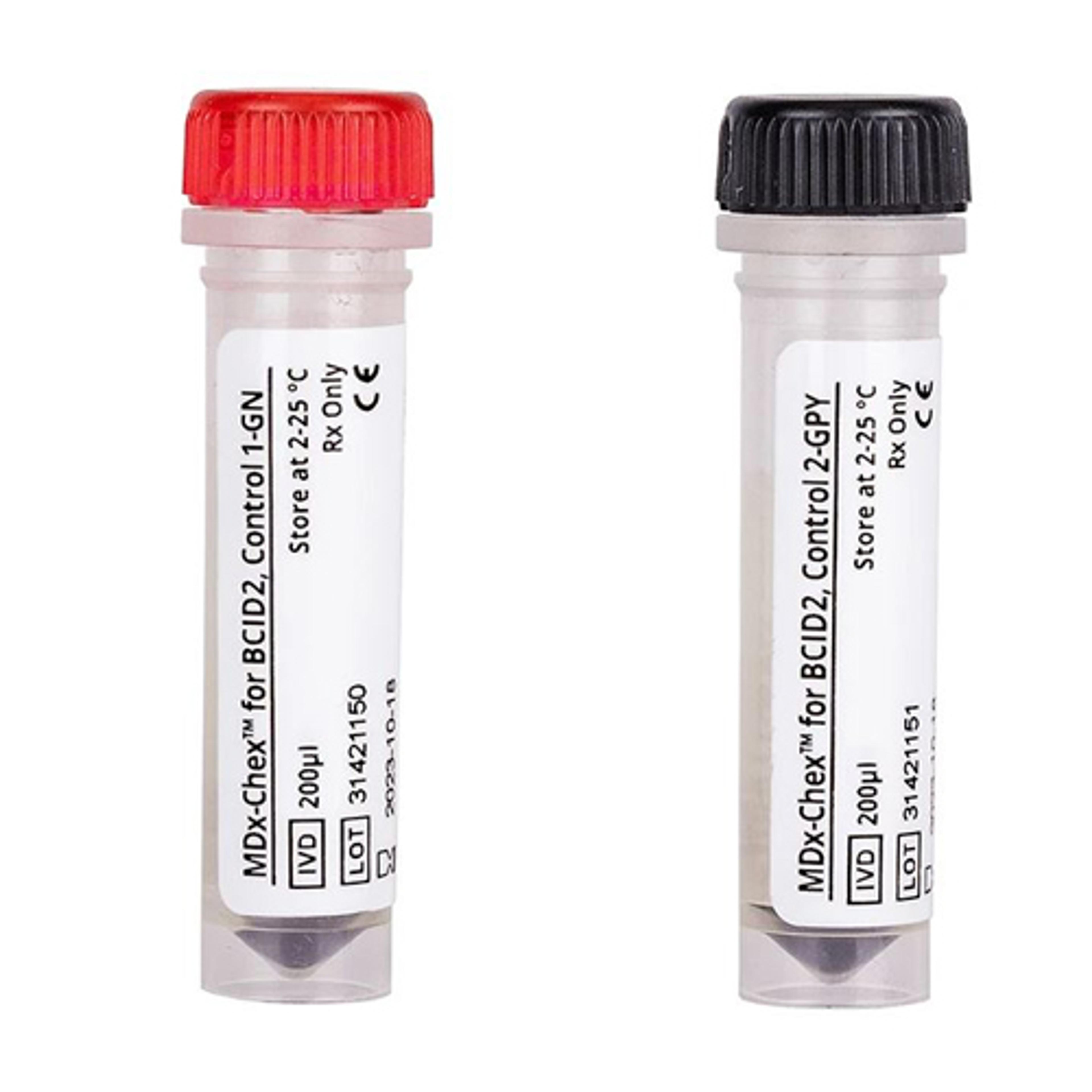Experts explore how molecular diagnostics are reshaping infectious disease testing and patient care
From sepsis to syndromic panels, this SelectScience forum discussed how molecular diagnostics is setting new standards for accuracy, efficiency, and impact
4 Nov 2025
In a recent SelectScience forum, held in partnership with Streck, leading experts gathered to discuss the current and future trends shaping molecular diagnostics. The discussion highlighted how advances in molecular testing are transforming lab workflows, improving clinical decision-making, and redefining standards of care, while also uncovering persistent challenges in cost, education, and equitable access.

The panel brought together Dr. Melissa Miller, Professor of Pathology and Laboratory Medicine at the University of North Carolina at Chapel Hill; Dr. Michelle Tabb, Chief Scientific Officer for the Molecular Division at Diasorin; Dr. Jacky Chow, Clinical Laboratory Director at MultiCare Health System; and Dr. Chris Connelly, Director of Business Segment – Molecular at Streck. They shared insights into how molecular diagnostics continue to accelerate the pace of patient care while driving new innovation across clinical and research labs.
A revolution in real-time patient impact
Reflecting on their career paths, the panelists described how the integration of molecular tools into clinical microbiology has redefined their profession. “I was drawn to clinical microbiology because it sits right at the intersection of science and patient care,” said Dr. Miller. “When I started, it took days or weeks to get a viral culture result. Now we can get results in hours or minutes in some cases. That really helps guide therapy, reduce unnecessary treatments, and ultimately impact patient outcomes.”
For Dr. Tabb, the appeal of molecular diagnostics lies in its technological and clinical synergy. “I’m kind of a technology geek inside still,” she said. “What we do every day can actually impact patients because of this technology evolution.” Dr. Chow agreed, adding that in the clinical lab, “there is always something new and exciting to learn. Even though we don’t see patients directly, there’s always a saying in clinical lab, there is a life behind each specimen that we handle and test.”
As Dr. Connelly from Streck noted, technological progress has been essential not just for speed but also for reliability. “I really am fascinated with how we’ve evolved some manual techniques and automated them to make workflows simpler and results faster, ultimately helping patients,” he said. “When I go to work, I know we’re helping make sure those results are accurate, that serves both the laboratories and the patients they serve.”
The balance between innovation and stewardship
From the development side, Dr. Tabb discussed how molecular device manufacturers have worked to simplify testing without compromising complexity under the hood. “We’ve seen a lot more cartridge-based, sample-to-answer tests,” she explained. “Although they look simple from the outside, the inside is super complicated. Making things more simple is good because it frees up time in the lab for people to do other things.”
She also emphasized the growing importance of “diagnostic stewardship”, the idea that labs must balance capability with clinical appropriateness. “Just because we can, should we?” she asked. “There are so many different tests available, but applying the right test to the right patient for the right reason reduces false positives and improves outcomes.”
That sense of careful application was echoed across the panel. Dr. Miller described how molecular testing has become central to diagnosing conditions once thought too slow or complex for rapid analysis. “Almost every viral diagnosis today is molecular,” she said. “Applying molecular diagnostics to sepsis or post-transplant infections has completely changed the diagnostic landscape. These tests have decreased patient morbidity and mortality, there’s no question.”
Dr. Chow added that molecular tools now offer clear downstream benefits. “If we use molecular technologies to detect a multidrug-resistant organism, we can isolate patients right away and prevent the spread of disease,” he said. “Or if you detect an MSSA versus MRSA, you can escalate or de-escalate antibiotics, that has a direct impact on patients.”
Implementation challenges: cost, education, and access
Despite its success, the transition to molecular diagnostics is not without hurdles. Dr. Chow outlined the multifaceted decision-making behind implementing new tests. “We think about clinical need, disease prevalence, test volume, cost, turnaround time, and staffing,” he said. “Cost is one of the biggest challenges because molecular technology is often more expensive. But the benefit can be downstream and system-wide, reducing antibiotic use, improving infection control, and shortening hospital stays.”
Dr. Miller agreed that financial and educational barriers persist. “While these tests can be expensive to implement, they’re only as valuable as the clinician’s ability to interpret them,” she said. “We work closely with colleagues to provide context, build interpretive reporting, and assess outcomes data to demonstrate clinical impact.” Reimbursement, she added, remains “a huge hurdle” for broader adoption, especially in outpatient settings. “Reimbursement strategies haven’t caught up with the clinical data that exists for many of these molecular tests,” she said.
The role of industry and the importance of molecular QC
From an industry perspective, Dr. Connelly emphasized the need for collaboration between diagnostic companies, laboratories, and clinicians. “We really think of it as a big collaboration,” he said. “At Streck, we develop third-party quality controls to ensure platforms are working appropriately. We work with clinical labs to understand workflow needs and make sure systems support diagnostic goals.”
He also noted that QC design must evolve alongside automation. “As we deliver faster results, we need quality controls that truly represent the patient sample,” he explained. “That means accounting for multiplexing, inhibitors, and regulatory requirements, while simplifying workflow to save time and reduce cost without compromising quality.”
Dr. Tabb added that early partnership between developers, labs, and control providers is crucial. “We try to work with clinical labs as far in advance as possible,” she said. “We ask what’s needed, whether educational materials or monitoring tools, even before a product is FDA cleared. Working behind the scenes with companies like Streck helps ensure that everything is ready when the test goes live.”
Automation in the evolving laboratory
Automation has already become a central force in molecular workflows. “It minimizes human error and frees our technologists to focus on higher-level analyses,” said Dr. Miller. “The idea of applying AI to interpret complex datasets like nanogenomics is certainly within reach. These tools aren’t replacing laboratorians but augmenting our ability to provide timely, accurate, and clinically useful information.”
Dr. Chow highlighted similar efficiencies at MultiCare. “Tech time is one of the most precious things we have in the lab,” he said. “Automation helps with pre-analytical processes like pipetting, and algorithms that automatically add follow-up tests based on initial results can streamline provider workflows too.”
The road to standard of care
When asked whether molecular diagnostics has become the standard of care, Dr. Chow was unequivocal. “We’re already there,” he said. “Molecular technology can be applied to multiple areas, sepsis, respiratory testing, gastrointestinal panels, and these are now widely used in clinical labs. The question is how to make it even better, more efficient, and more cost-beneficial.”
Dr. Miller agreed, noting that expectations have changed. “It’s not only that we’re there; it’s become expected,” she said. “We’re seeing molecular testing in 50- to 150-bed hospitals that we weren’t seeing before, thanks to cartridge-based testing and syndromic panels. To make it universal, we need broader payer support and continued investment in lab infrastructure. The lab is always forgotten.”
Both speakers stressed that education must continue in parallel. “As we have more data showing improved outcomes and cost-effectiveness,” said Dr. Miller, “we’ll shift the perception from molecular being advanced testing to it being the way to diagnose patients.”
Looking ahead, at integration and equity
In the forum’s closing discussion, the panelists turned their attention to the next five years of molecular diagnostics. Dr. Miller predicted major advances in sequencing and pathogen-agnostic diagnostics. “Configuration of sequencing-based tools into routine diagnostics can give us precise diagnoses, including resistance markers,” she said. “Costs are coming down, and accessibility is improving.”
Dr. Tabb added that future systems will integrate multiple layers of data. “Detection of DNA or RNA is fantastic, but adding protein and patient information will enable risk categorization and more personalized care,” she said. Dr. Chow cautioned that success will depend on test utilization and interpretation: “Now you have one test that can detect 40 pathogens. You have to make good sense of it. Developing a test with great clinical utility is part one. Making good use of it is part two.”
Accessibility remains the largest gap. “Some labs are still afraid to do molecular testing,” Dr. Miller noted. “It’s about infrastructure and reimbursement solving those first will help close the equity gap.” Cost and reimbursement were also; named by Dr. Tabb and Dr. Connelly as the main barriers to overcome. “If the cost of these tests was $1, you could put them everywhere,” said Tabb. “That’s the biggest thing.”



